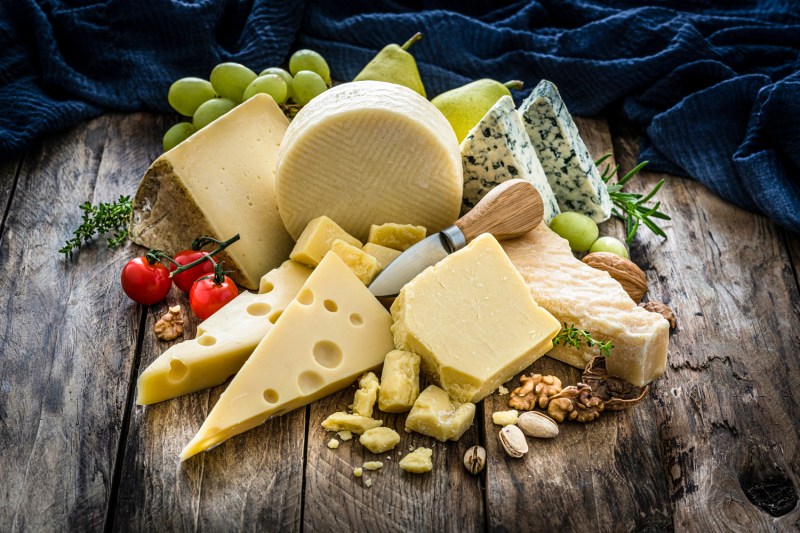Cheese and crackers are as classic a holiday party staple as mistletoe and bad dance moves. These little snacks have adorned our holiday buffets for generations, out-surviving its sister party snacks of yore like ambrosia salad and toothpicked cocktail weenies. Yes, the classic pairing of cheese and crackers has stood the turbulent test of time, and come out on the other side stronger than ever. These days, charcuterie boards, butter boards, and all sorts of unique cheeses take center stage at even the hippest of soirees.

And while cheese and crackers may still be peppering our tables, this popular appetizer has certainly come a long way from a sleeve of Ritz and can of Easy-Cheese. But with all of the beautifully exotic, divinely flavorful cheeses available now, selecting a few for your party spread can be a bit intimidating. And then there’s the issue of what to pair with those cheeses! The options are never-ending. There are countless chutneys, marmalades, honeys and fresh fruits to choose from. All of this before you even leave the grocery store and try to make it all look picture-perfect for your party display. It’s a lot of pressure. So we’re here to help you figure out a few basic, perfect cheese pairings for your holiday boards this year.
Below is a list of popular cheeses and perfect accompaniments that best show off and accentuate their flavors. You can leave the pairings simple, elegantly coupling your cheeses with our suggested ingredients, or, let this be a loose guideline, and allow your own creativity to do the rest. Either way, these pairings are classic, and will have your party guests feeling grateful that this trend is still standing strong.
- Brie/Honey
- Gouda/Apple chutney
- Goat/Honeycomb
- Blue/Cherry compote
- Cheddar/Onion marmalade
- Manchego/Quince
Take a cue from these flavor combinations when looking for garnishes as well. Next to your gouda and apple chutney, for example, a few apple slices would be not only lovely, but paint a clear picture as to what flavors your guest can expect. Fresh herbs, a mixture of nuts, roasted garlic, and olives also add color and dimension to cheese boards, in addition to being delicious extras.
Now that you have a few perfect pairings in your cheese board repertoire, feel free to mix it up and embellish with all of your favorite flavors. Because let’s be honest — it’s hard to go wrong with a platter full of cheese.



